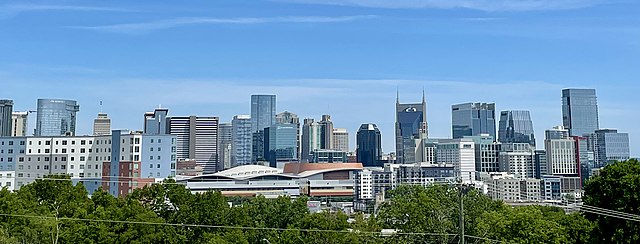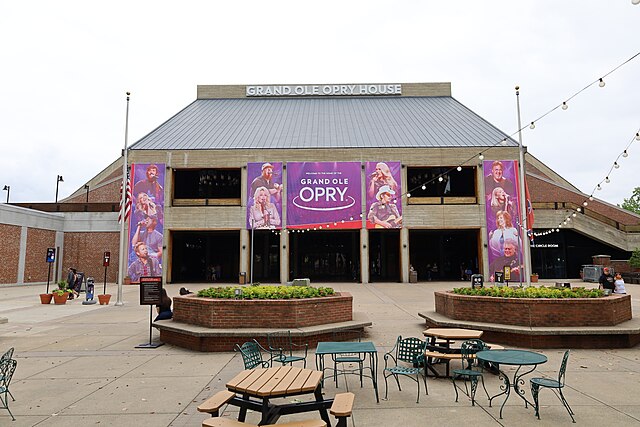The Tennessee State Capitol, located in Nashville, Tennessee, is the seat of government for the U.S. state of Tennessee. It serves as the home of both houses of the Tennessee General Assembly–the Tennessee House of Representatives and the Tennessee Senate–and also contains the governor's office. Designed by architect William Strickland (1788–1854) of Philadelphia and Nashville, it was built between 1845 and 1859 and is one of Nashville's most prominent examples of Greek Revival architecture. The building, one of 12 state capitols that does not have a dome, was added to the National Register of Historic Places in 1970 and named a National Historic Landmark in 1971. The tomb of James K. Polk, the 11th president of the United States, is on the capitol grounds.
Tennessee State Capitol in 2022
Tennessee State Capitol during the Civil War. Photo by George N. Barnard.
View from the capitol ca. 1865
Tennessee State Capitol depicted on an 1864 Confederate $20 banknote
Nashville is the capital and most populous city in the U.S. state of Tennessee and the county seat of Davidson County. Located in Middle Tennessee, it had a population of 689,447 at the 2020 U.S. census. Nashville is the 21st most populous city in the United States, and the fourth most populous city in the southeastern U.S. Located on the Cumberland River, the city is the center of the Nashville metropolitan area, and is one of the fastest growing in the nation.
Image: Nashville Skyline from Ft Negly Photo 2 June 2022
Image: Kirkland Hall at Vanderbilt University
Image: Bridgestone Arena (Northeast corner)
Image: Grand Ole Opry House 2022a








